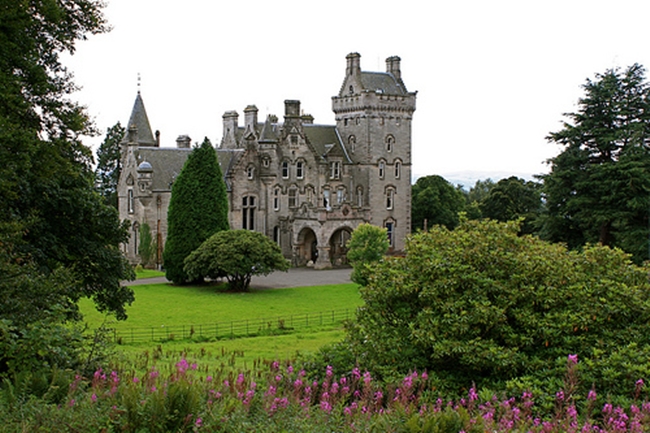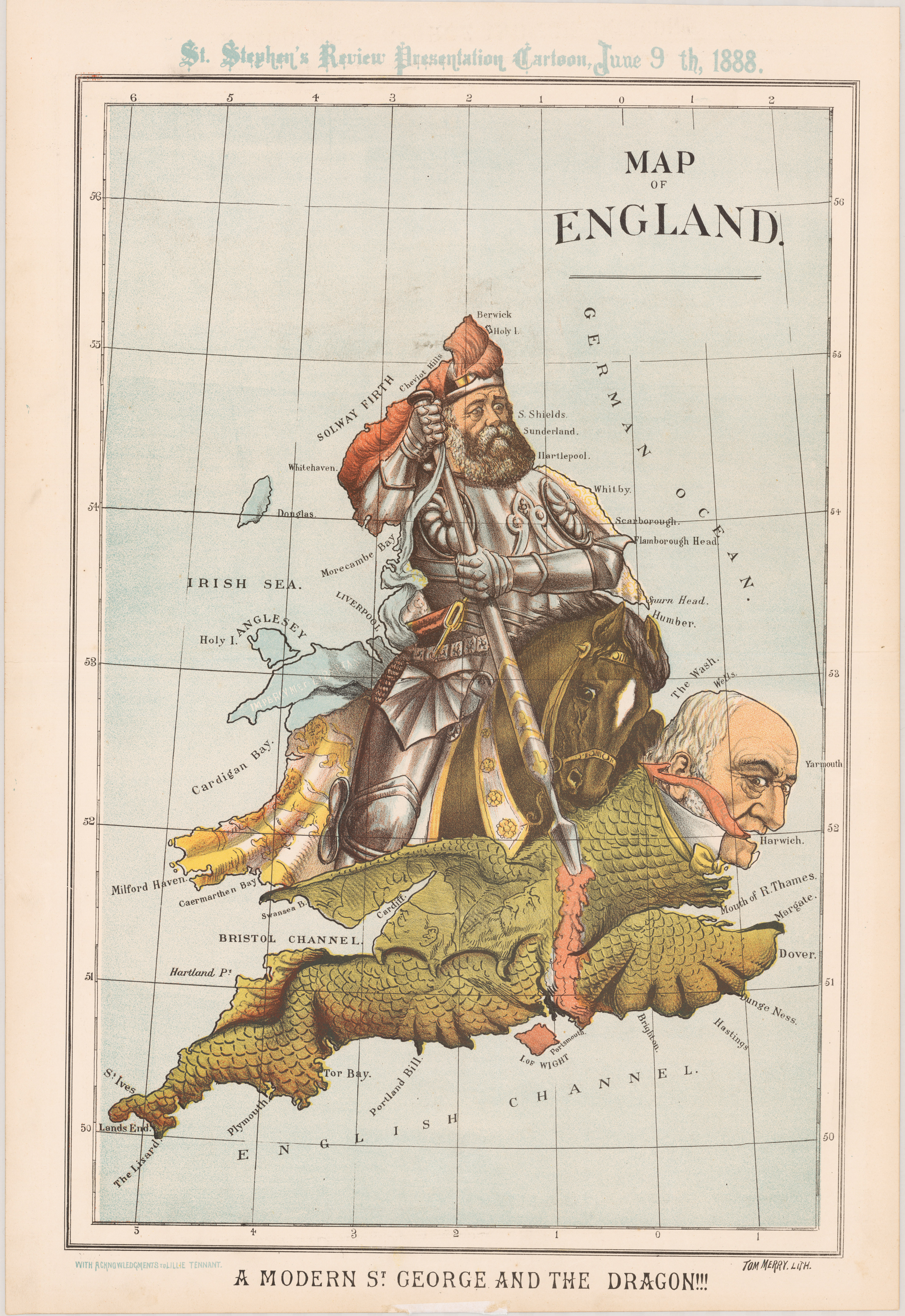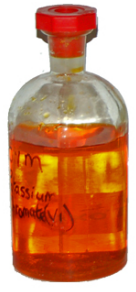|
John White, 1st Baron Overtoun
John Campbell White, 1st Baron Overtoun, (21 November 1843 – 15 February 1908) was a Scottish chemical manufacturer, supporter of religious causes, philanthropist and Liberal politician. He was raised to the peerage by Gladstone in 1893, and in 1905 was granted the Freedom of the City of Rutherglen (where his chemical works was based), following being honoured in the same fashion by Dumbarton two years earlier, in recognition of his philanthropic endeavours. White's persona as a generous and committed Scottish Presbyterian was at odds with his exploitation of the workers at his Shawfield Chemical Works, the source of his great wealth. Politician and leader of the nascent Labour Party, Keir Hardie, exposed the scandalous working conditions there in a series of pamphlets published in 1899 entitled ''White Slaves''. Background and education Lord Overtoun's father, James White of Overtoun (1812–1884) was originally a lawyer, who had left the legal profession to join John & ... [...More Info...] [...Related Items...] OR: [Wikipedia] [Google] [Baidu] |
Rutherglen
Rutherglen (, sco, Ruglen, gd, An Ruadh-Ghleann) is a town in South Lanarkshire, Scotland, immediately south-east of the city of Glasgow, from its centre and directly south of the River Clyde. Having existed as a Lanarkshire burgh in its own right for more than 800 years, in 1975 Rutherglen lost its own local council and administratively became a component of the City of Glasgow (1975–1996), City of Glasgow District within the Strathclyde Local government areas of Scotland 1973–96, region (along with neighbouring Cambuslang). In 1996 the towns were reallocated to the South Lanarkshire Subdivisions of Scotland, council area.From a pawnbrokers to Parliament - Tommy McAvoy looks back on a career that too ... [...More Info...] [...Related Items...] OR: [Wikipedia] [Google] [Baidu] |
Renfrewshire
Renfrewshire () ( sco, Renfrewshire; gd, Siorrachd Rinn Friù) is one of the 32 council areas of Scotland. Located in the west central Lowlands, it is one of three council areas contained within the boundaries of the historic county of Renfrewshire, the others being East Renfrewshire to the east and Inverclyde to the west. It also shares borders with Glasgow, North Ayrshire and West Dunbartonshire, and lies on the southern bank of the River Clyde. The term Renfrewshire may also be used to refer to the historic county, also known as the County of Renfrew or Greater Renfrewshire, with origins in the 16th century. The larger Renfrewshire, containing Renfrewshire, Inverclyde and East Renfrewshire, remains in use as a registration county and lieutenancy area as well as a joint valuation board area for electoral registration and local tax valuation purposes. The town of Paisley is the area's main settlement and centre of local government and contains the historic county town, ... [...More Info...] [...Related Items...] OR: [Wikipedia] [Google] [Baidu] |
Government Of Ireland Bill 1886
The Government of Ireland Bill 1886, commonly known as the First Home Rule Bill, was the first major attempt made by a British government to enact a law creating home rule for part of the United Kingdom of Great Britain and Ireland. It was introduced on 8 April 1886 by Liberal Prime Minister William Gladstone to create a devolved assembly for Ireland which would govern Ireland in specified areas. The Irish Parliamentary Party under Charles Stewart Parnell had been campaigning for home rule for Ireland since the 1870s. The bill, like his Irish Land Act 1870, was very much the work of Gladstone, who excluded both the Irish MPs and his own ministers from participation in the drafting. Following the Purchase of Land (Ireland) Act 1885 it was to be introduced alongside a new Land Purchase Bill to reform tenant rights, but the latter was abandoned. Alvin Jackson, ''Home Rule: An Irish History 1800—2000'' Key aspects The key aspects of the 1886 bill were: Legislative * A unicamera ... [...More Info...] [...Related Items...] OR: [Wikipedia] [Google] [Baidu] |
Scottish Liberal Association
The Scottish Liberal Party, the section of the Liberal Party in Scotland, was the dominant political party of Victorian Scotland, and although its importance declined with the rise of the Labour and Unionist parties during the 20th century, it was still a significant, albeit much reduced force when it finally merged with the Social Democratic Party in Scotland, to form the Scottish Liberal Democrats in 1988. The party lost its last remaining seats in the UK Parliament in 1945, and continued to decline in popular support in the post war years, with Jo Grimond (who won back Orkney and Shetland in 1950) being the sole Scottish Liberal MP in the House of Commons from 1951 to 1964. The party gained a partial revival in the 1964 general election returning three further MPs; George Mackie, Russell Johnston and Alasdair Mackenzie. A further gain came the following year with David Steel's victory at the Roxburgh, Selkirk and Peebles by-election. Steel went on to become a pivotal figur ... [...More Info...] [...Related Items...] OR: [Wikipedia] [Google] [Baidu] |
United Free Church Of Scotland
The United Free Church of Scotland (UF Church; gd, An Eaglais Shaor Aonaichte, sco, The Unitit Free Kirk o Scotland) is a Scottish Presbyterian denomination formed in 1900 by the union of the United Presbyterian Church of Scotland (or UP) and the majority of the 19th-century Free Church of Scotland. The majority of the United Free Church of Scotland united with the Church of Scotland in 1929. Origins The Free Church of Scotland seceded from the Church of Scotland in the Disruption of 1843. The United Presbyterian Church was formed in 1847 by a union of the United Secession and Relief Churches, both of which had split from the Church of Scotland. The two denominations united in 1900 to form the United Free Church (except for a small section of the Free Church who rejected the union and continued independently under the name of the Free Church). Legal dispute:''The Free Church Case'' The minority of the Free Church, which had refused to join the union, quickly tested i ... [...More Info...] [...Related Items...] OR: [Wikipedia] [Google] [Baidu] |
United Presbyterian Church Of Scotland
The United Presbyterian Church (1847–1900) was a Scottish Presbyterian denomination. It was formed in 1847 by the union of the United Secession Church and the Relief Church, and in 1900 merged with the Free Church of Scotland to form the United Free Church of Scotland, which in turn united with the Church of Scotland in 1929. For most of its existence the United Presbyterian Church was the third largest Presbyterian Church in Scotland, and stood on the liberal wing of Scots Presbyterianism. The Church's name was often abbreviated to the initials U.P. United Secession Church It was founded in 1820 by a union of various churches which had seceded from the established Church of Scotland. The First Secession had been in 1732, and the resultant "Associate Presbytery" grew to include 45 congregations. A series of disputes, in 1747 over the burgesses oath, and in the late 18th century over the Westminster confession, led to further splits, but in 1820 two of the groups united to f ... [...More Info...] [...Related Items...] OR: [Wikipedia] [Google] [Baidu] |
Free Church Of Scotland (1843–1900)
The Free Church of Scotland is a Scottish denomination which was formed in 1843 by a large withdrawal from the established Church of Scotland in a schism known as the Disruption of 1843. In 1900, the vast majority of the Free Church of Scotland joined with the United Presbyterian Church of Scotland to form the United Free Church of Scotland (which itself mostly re-united with the Church of Scotland in 1929). In 1904, the House of Lords judged that the constitutional minority that did not enter the 1900 union were entitled to the whole of the church's patrimony, the Free Church of Scotland acquiesced in the division of those assets, between itself and those who had entered the union, by a Royal Commission in 1905. Despite the late founding date, Free Church of Scotland leadership claims an unbroken succession of leaders going all the way back to the Apostles. Origins The Free Church was formed by Evangelicals who broke from the Establishment of the Church of Scotland in 1 ... [...More Info...] [...Related Items...] OR: [Wikipedia] [Google] [Baidu] |
Septum
In biology, a septum (Latin for ''something that encloses''; plural septa) is a wall, dividing a cavity or structure into smaller ones. A cavity or structure divided in this way may be referred to as septate. Examples Human anatomy * Interatrial septum, the wall of tissue that is a sectional part of the left and right atria of the heart * Interventricular septum, the wall separating the left and right ventricles of the heart * Lingual septum, a vertical layer of fibrous tissue that separates the halves of the tongue. *Nasal septum: the cartilage wall separating the nostrils of the nose * Alveolar septum: the thin wall which separates the alveoli from each other in the lungs * Orbital septum, a palpebral ligament in the upper and lower eyelids * Septum pellucidum or septum lucidum, a thin structure separating two fluid pockets in the brain * Uterine septum, a malformation of the uterus * Vaginal septum, a lateral or transverse partition inside the vagina * Intermuscular sep ... [...More Info...] [...Related Items...] OR: [Wikipedia] [Google] [Baidu] |
Thomas Legge
Thomas Legge (; 1535 – 12 July 1607) was an English playwright, prominently known for his play ''Richardus Tertius'', which is considered to be the first history play written in England. Biography Legge was the second of three sons born to Stephen and Margaret Legge in 1535. Originally from Norwich, Legge moved to Cambridge in 1552 where he matriculated to Corpus Christi College . Soon after he moved again to attend Trinity College, where he received a B.A. in 1556. He then went on to attend Oxford in 1566, where he received his master's degree. In 1568 Legge became a member of the faculty at Jesus College, Cambridge, where he was known to be an active tutor and a proponent of the old way of thinking in religious matters. On 27 June 1573 Legge was appointed master of Caius College, taking many students from Jesus College with him when he left. While in office at Caius, Legge stirred up trouble by promoting John Depup, M.A. to a fellowship, which Dr. Caius disagreed with becau ... [...More Info...] [...Related Items...] OR: [Wikipedia] [Google] [Baidu] |
Potassium Dichromate
Potassium dichromate, , is a common inorganic chemical reagent, most commonly used as an oxidizing agent in various laboratory and industrial applications. As with all hexavalent chromium compounds, it is acutely and chronically harmful to health. It is a crystalline ionic solid with a very bright, red-orange color. The salt is popular in the laboratory because it is not deliquescent, in contrast to the more industrially relevant salt sodium dichromate.Gerd Anger, Jost Halstenberg, Klaus Hochgeschwender, Christoph Scherhag, Ulrich Korallus, Herbert Knopf, Peter Schmidt, Manfred Ohlinger, "Chromium Compounds" in Ullmann's Encyclopedia of Industrial Chemistry, Wiley-VCH, Weinheim, 2005. Chemistry Production Potassium dichromate is usually prepared by the reaction of potassium chloride on sodium dichromate. Alternatively, it can be also obtained from potassium chromate by roasting chromite ore with potassium hydroxide. It is soluble in water and in the dissolution process it io ... [...More Info...] [...Related Items...] OR: [Wikipedia] [Google] [Baidu] |
William James Chrystal
William James Chrystal (20 May 1854 – 21 April 1921) was a Scottish chemist and partner in his family’s chemicals business J & J White Chemicals based in Rutherglen. Ancestors Chrystal was born in Glasgow, son of insurance broker Robert Chrystal and grandson of Dr. William Chrystal (1776–1830), rector of Glasgow Grammar School who died in a boating accident and is remembered with a bust in Glasgow Cathedral. His mother Jean was the daughter of the founder of ''J & J White Chemicals'', John White, and her brothers John and James were also partners from 1840 and 1851 respectively until their deaths in the 1880s. Education and career Chrystal was educated at The Glasgow Academy and the University of Glasgow. He was a fellow of the Royal Institute of Chemistry and the Chemical Society. After working in a laboratory in the 1870s he joined ''J & J White Chemicals'' as an expert chemist, and after his uncle John died in 1881 he became the technical partner in the business. By ... [...More Info...] [...Related Items...] OR: [Wikipedia] [Google] [Baidu] |
William Thomson, 1st Baron Kelvin
William Thomson, 1st Baron Kelvin, (26 June 182417 December 1907) was a British mathematician, mathematical physicist and engineer born in Belfast. Professor of Natural Philosophy at the University of Glasgow for 53 years, he did important work in the mathematical analysis of electricity and formulation of the first and second laws of thermodynamics, and did much to unify the emerging discipline of physics in its contemporary form. He received the Royal Society's Copley Medal in 1883, was its president 1890–1895, and in 1892 was the first British scientist to be elevated to the House of Lords. Absolute temperatures are stated in units of kelvin in his honour. While the existence of a coldest possible temperature ( absolute zero) was known prior to his work, Kelvin is known for determining its correct value as approximately −273.15 degrees Celsius or −459.67 degrees Fahrenheit. The Joule–Thomson effect is also named in his honour. He worked closely with mathematics ... [...More Info...] [...Related Items...] OR: [Wikipedia] [Google] [Baidu] |







